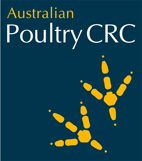By Andrew Turner
A number of interesting papers have been published recently about the bird flu epidemic in Asia, Africa and Europe.
A paper by Kilpatrick et al (2006) concluded that H5N1 HPNAI infection in Asia was most likely spread to 9 of 21 Asian countries by poultry and 3 of 21 countries by migratory birds while 20 of 23 entries to European countries was most likely brought about by migratory birds. In Africa it was most likely poultry in 2 of 8 entries and wild birds in 3 of 8 entries.
While this does not explain what happened in all cases of spread in the three regions (because the phylogenetic evidence was not strong enough), it does point out the important role that poultry and poultry products do play in the transmission of H5N1 infection.
The paper predicted that poultry and poultry products would pose the most likely vehicle for transferring H5N1 infection to the western hemisphere, with mainland USA likely acquiring infection from possible further dissemination by migratory birds rather than an extension by migratory birds from eastern Siberia.
A paper by Wallace et al (2007) studied the phylogeny of the haemagglutinin and neuraminidase genes of H5N1 viruses to track virus migration. This paper sought to demonstrate the source of the various regional clades.
The authors drew the conclusion that the Chinese province of Guangdong was the source of multiple strains spreading to regional and international sites. The Indochina region appeared to have dispersed viruses to localities within the region. By examining the haemagglutinin, the study suggested that H5N1 is able to infect repeated cycles of host species across localities, regardless of the host species first infected in each locale.
There has been much debate in ProMed about the relative importance of wild birds in the spread of the epidemic in poultry and from where viruses have emerged over the period 1996 to 2006. No reasonable conclusions were reached in the ProMed postings, with some wild bird and poultry groups wanting to point a finger at the other.
These studies start to provide a basis for assessing scientifically the likelihood of the way events have unfolded.
References:
Kilpatrick AM, Chmura AA, Gibbons DW, Fleischer RC, Marra PP & Daszak P (2006). Predicting the global spread of H5N1 avian influenza. Proc Natl Acad Sci 103: 19368- 19373.
Wallace RG, HoDac HM, Lathrop RH & Fitch WM (2007). A statistical phylogeography of influenza A H5N1. PNAS 0700435104 early publication.


